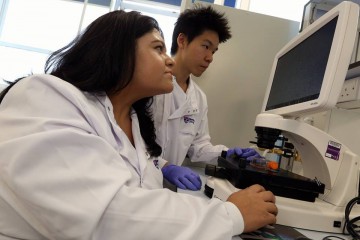PhD Studentship
3D bioprinted microtissues to develop patient-specific non-animal technologies (NAT) in cancer drug development

At a glance
Completed
Award date
October 2021 - September 2024
Grant amount
£90,000
Principal investigator
Dr Deepali Pal
Co-investigator(s)
Institute
Northumbria University
R
- Replacement
Read the abstract
View the grant profile on GtR
NC3Rs gateway article
Read a Brief Report from this project on F1000 Research
